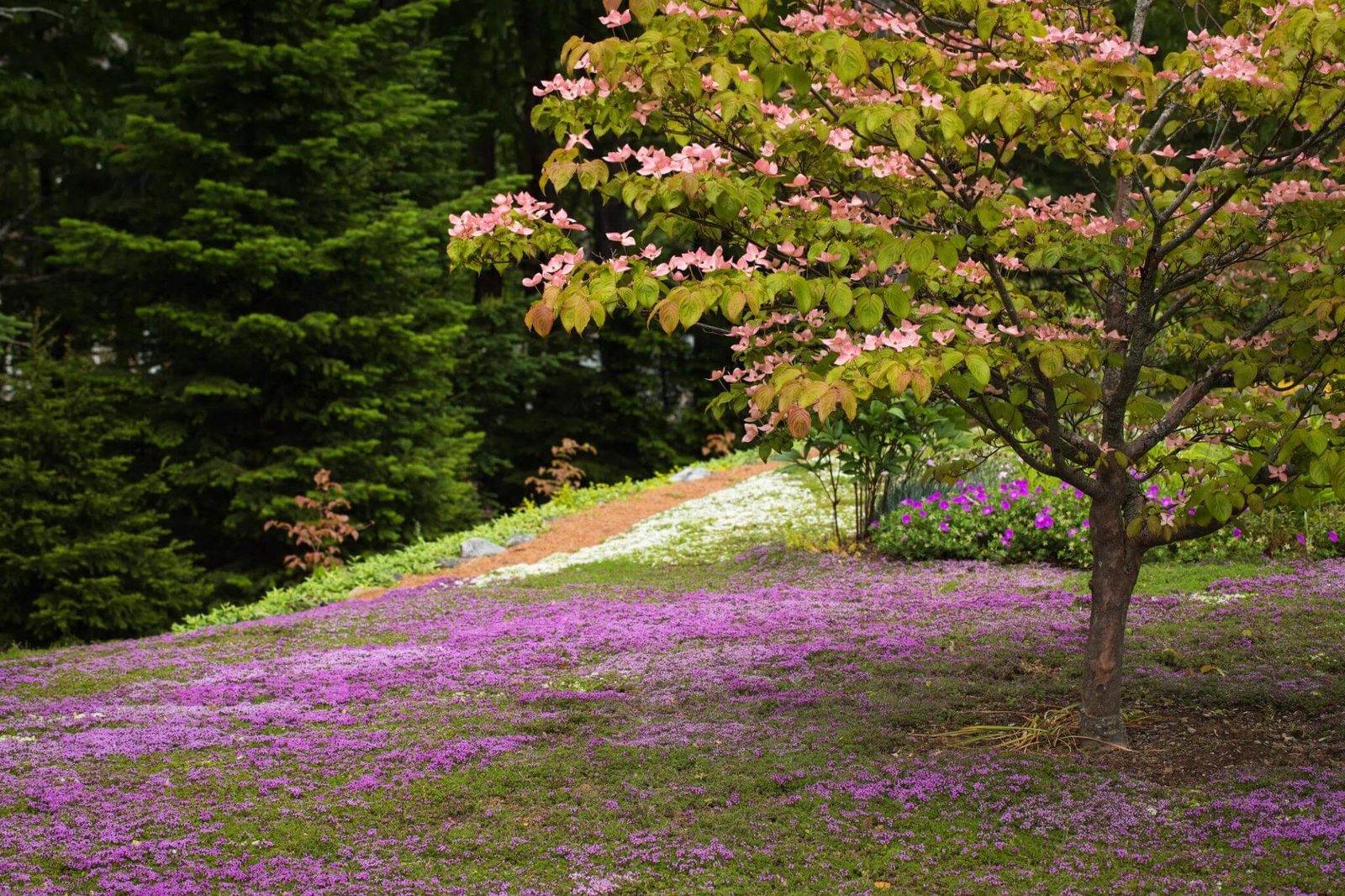
When it comes to versatile and aromatic ground cover plants, few can rival the charm and functionality of creeping thyme.
This resilient herbaceous perennial not only beautifies outdoor spaces but also serves as a culinary delight, adding flavor and fragrance to various dishes.
In this comprehensive guide, we’ll delve into the wonders of creeping thyme, exploring its characteristics, cultivation tips, culinary uses, and more.
Understanding Creeping Thyme
Creeping thyme, which is scientifically referred to as Thymus serpyllum, is a herbaceous perennial that grows along the ground which is common in Europe and North Africa.
It belongs to mint family (Lamiaceae) alongside small aromatic leaves and delicate clusters of flowers of different colors including white or shades of pink and purple.
This herb is renowned for its rapid growth rate that leads it to cover wide areas within no time after planting with very few gaps in between the plants thus reducing competition from unwanted plants by blocking everything else but retaining moisture into the soil.
Varieties of Creeping Thyme
Several cultivars of creeping thyme exist, each with its unique attributes and characteristics. Some popular varieties include:
- ‘Elfin’ Thyme: This compact variety features small, dark green leaves and a prostrate growth habit, making it ideal for rock gardens and between stepping stones.
- ‘Pink Chintz’ Thyme: Adorned with light pink flowers, this cultivar adds a touch of color to garden borders and edging.
- ‘Mother of Thyme’ (Thymus praecox): Although not a true creeping thyme, this species closely resembles its creeping counterpart and is valued for its robust growth and profusion of pink flowers.
Cultivation Tips
Growing creeping thyme is relatively straightforward, making it suitable for both novice and experienced gardeners. Here are some essential tips for cultivating this delightful herb:
Sunlight Requirements
Creeping thyme thrives in full sunlight, so ensure that your chosen planting location receives at least six to eight hours of direct sunlight per day.
Soil Conditions
Well-drained soil is crucial for the health and vigor of creeping thyme. Avoid waterlogged or overly compacted soil, as it can lead to root rot and other issues. Incorporating organic matter, such as compost, can improve soil structure and fertility.
Watering Needs
While creeping thyme is drought-tolerant once established, it benefits from regular watering during periods of prolonged dryness, especially in hot climates. However, be cautious not to overwater, as this can promote fungal diseases and root rot.
Propagation Methods
Creeping thyme can be propagated through seeds, cuttings, or division. Seeds should be sown indoors or directly in the garden after the last frost date, while stem cuttings can be rooted in moist potting soil. Division involves separating mature clumps into smaller sections, each with its root system.
Culinary Uses
Beyond its ornamental value, creeping thyme is treasured for its culinary versatility and rich flavor profile. The leaves of this herb impart a subtle yet distinctive taste to a wide range of dishes, including:
- Roasted Meats: Sprinkle chopped creeping thyme leaves over roasted chicken, lamb, or pork for added depth of flavor.
- Soups and Stews: Infuse soups, stews, and sauces with the aromatic essence of creeping thyme to elevate their taste and aroma.
- Salads: Toss fresh thyme leaves into salads for a refreshing burst of herbal goodness.
Medicinal Benefits
In addition to its culinary uses, creeping thyme has been valued for its medicinal properties for centuries. Rich in antioxidants and essential oils, this herb is believed to offer various health benefits, including:
- Digestive Aid: Creeping thyme is thought to aid digestion and alleviate gastrointestinal discomfort when consumed as a tea or infusion.
- Respiratory Support: Inhalation of thyme essential oil vapor may help relieve respiratory congestion and promote clear breathing.
- Antimicrobial Action: The antimicrobial properties of creeping thyme make it a popular ingredient in natural remedies for coughs, colds, and sore throats.
Aesthetic Appeal
Beyond its practical benefits, creeping thyme adds aesthetic appeal to gardens, landscapes, and outdoor living spaces.
Whether cascading over rock walls, filling gaps between pavers, or trailing along garden borders, its lush foliage and delicate flowers create a picturesque tapestry of color and texture.
Conclusion
In conclusion, creeping thyme emerges as a true secret weapon for both gardeners and culinary enthusiasts alike.
With its fragrant ground cover and delightful culinary attributes, this versatile herb enriches outdoor spaces while tantalizing the taste buds with its aromatic essence.
Whether used as a decorative accent or a flavorful ingredient, creeping thyme undoubtedly deserves a place of honor in gardens and kitchens around the world.
